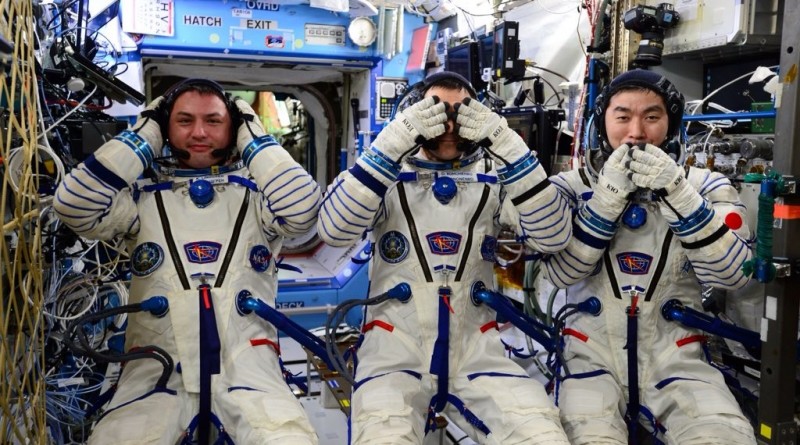Soyuz Trio set for rare Nighttime Landing on Friday
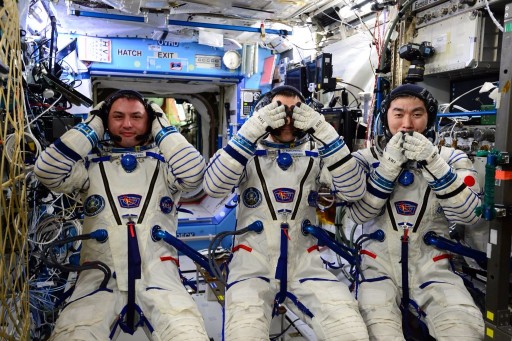
A trio of International Space Station crew members are on the eve of their return to Earth aboard Soyuz TMA-17M after a mission of four and a half months living and working on the orbiting laboratory. Soyuz Commander Oleg Kononenko and Flight Engineers Kimiya Yui and Kjell Lindgren are set for a rare nighttime landing well after sunset in typical winter conditions in the steppes of Kazakhstan.
The three returning crew members will climb into their Soyuz in the early hours on Friday with hatch closure scheduled for 6:25 UTC to be followed by the craft’s undocking at 9:49 UTC to mark the start of a free flight of two and a half hours to set up for a retrograde deorbit burn. Hitting the brakes, Soyuz will fire its engines to slow down and place itself on a precisely planned re-entry trajectory. Going through a blazing re-entry, the returning crew members will have to endure forces of up to five Gs before their flight gets much calmer when the large orange-and-white main chute of the Soyuz inflates. The big finale of their return, touching down cushioned by the soft landing of the Soyuz, is expected at 13:12 UTC, two hours after sunset.
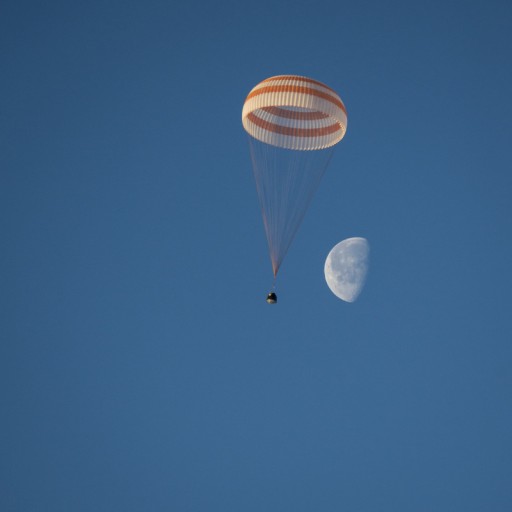
Typically, Soyuz landing are set up for the early morning or noon, local time, to provide sufficient time to recovery forces with plenty of daylight to a) locate the Soyuz, b) complete all crew-related operations in daylight and c) pack the Soyuz up and depart the site prior to nightfall. However, for a day landing, the orbital geometry has to be set up to allow the Soyuz to come in early in the morning which is not possible in December.
Initially, the landing of the Soyuz was planned for the second half of December, closer to the local sunset, but this would have required a relocation of Soyuz TMA-17M because the inbound Soyuz TMA-19M can only make a six-hour launch-to-docking in the first half of December. To avoid a relocation of the spacecraft, Russian Mission Managers approved this rare nighttime landing of the Soyuz, also owed to the accuracy seen in recent Soyuz landings which should enable recovery teams to quickly locate the spacecraft, even after nightfall.
The most recent nighttime landing of the Soyuz was conducted in November 2012 when Yuri Malenchenko, Suni Williams and Aki Hoshide returned to Earth one hour prior to sunrise. Even though Soyuz TMA-05M slightly overshot its bullseye landing target, the recovery of the crew proceeded swiftly and all three crew members were out of the Soyuz ahead of sunrise under illumination by a large emergency light tower that will again come to use on Friday. Soyuz TMA-17M will mark the fifth nighttime landing of a Soyuz returning from the International Space Station.
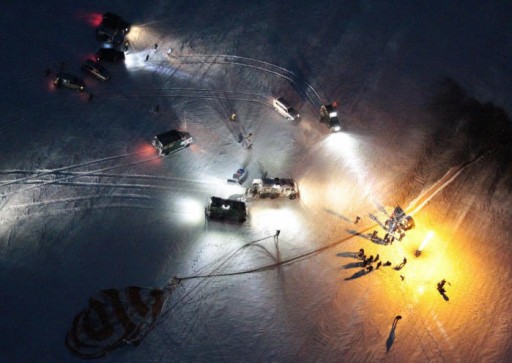
The three returning crew members completed the usual preparations flow for their landing, starting about three weeks in advance with personal departure preparations, packing the Soyuz with return and disposal items and tagging up with recovery teams to get up to speed on the plans for their nighttime landing. The crew also went through procedure reviews for their landing and the customary simulations of their upcoming descent inside their Soyuz spacecraft. They also went through leak checks of their Sokol Launch and Entry Suits and checked the fit of their Kazbek seat liners. This week, Soyuz TMA-17M completed the prescribed thruster test, firing each of its small thrusters for a short moment to make sure all were still operational after sitting idle for over four months.
Having just captured the Cygnus OA-4 spacecraft on Wednesday, the crew aboard ISS worked a half day on Thursday to be able to have a very early start on Friday. In the early hours, UTC, Oleg Kononenko will power-up the Soyuz spacecraft and work through communication checks with the ground and configure the vehicle for free flight and landing, also placing the final return items aboard the small Entry Module. Mission Control will radio up to the crew a final update to the deorbit timeline based on the latest orbital trajectory computations using up to date tracking of the Space Station’s orbit.
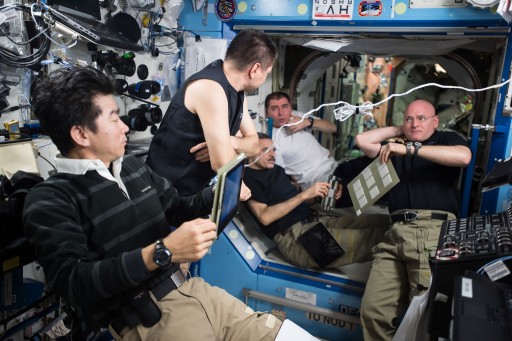
Around 6:25 UTC, the departing crew members will bid farewell to their colleagues who will remain in orbit until March. The Soyuz crew will float into their spacecraft and close the hatch of the Soyuz while the ISS crew closes the hatch of the Rassvet module after rubbing the seals with alcohol to make sure a pressure tight seal can be established.
The standard one-hour leak check will see the depressurization of the small and large vestibule areas between the Soyuz spacecraft and the Rassvet module. While leak checks are in progress, the crew members will ingress their Sokol Launch and Entry Suits, radioing down to the ground pressure readings every five minutes. The crew trio will ingress their seats in the entry module with veteran Soyuz Commander Oleg Kononenko taking the center seat, flanked to the left by Kimiya Yui and to the right by Kjell Lindgren, both looking forward to their first return from space.
When the hatch of the Entry Module is closed, the pressure of the Orbital Module will be vented down slightly so that a leak check between the two Soyuz modules can be conducted. A leak check will also be performed by each crew member on their Sokol suit to make sure all are holding pressure to act as a last resort to keep the crew safe in the event of a cabin depressurization.
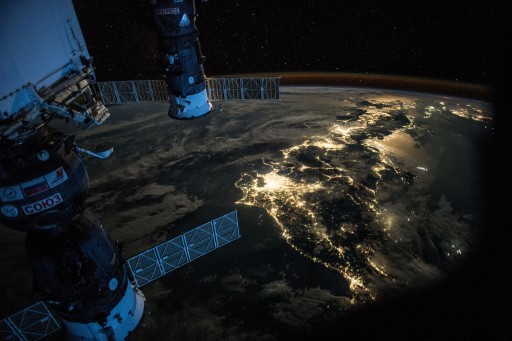
Hooks on the Rassvet module will be opened so that Soyuz is only held in place by its own hooks and ISS will transition to the proper orientation for the undocking. The TMA-17M spacecraft will be transitioned to autonomous power and its Flight Control System will be switched to flight mode. Five minutes prior to undocking, the docking mechanism of the Soyuz will be powered up and the crew will issue the last set of commands to set up for separation.
ISS will disable the Russian Thrusters one minute prior to the undocking command to prevent any thruster firings during the demating sequence – the USOS Control Moment Gyros will enter a Fine Attitude Hold mode for the undocking sequence. Upon receiving the undocking command at 9:48:00 UTC, the Soyuz will begin driving open its hooks leading up to physical separation that is commanded 90 seconds later by releasing a set of four loaded spring assemblies that deliver a force of around 300 Kilograms to push the Soyuz and ISS apart.
The springs will enable the Soyuz and ISS to drift apart at a speed of 0.12 meters per second and the crew will keep a close eye on the spacecraft’s departure path to ensure it remains within the specified departure corridor. They will also check the docking mechanism on the ISS side to make sure no debris or damage is left behind as this mechanism will again be in use on Tuesday when Soyuz TMA-19M arrives at ISS.
Soyuz will fire its engines twice to depart the Station, the first time around three minutes after separation when the craft is 20 meters from ISS followed by a quick roll maneuver to point the thrusters of the Soyuz to the correct direction for the second separation burn that is to take place 90 seconds after the first and deliver a thrust component along the velocity vector to put the Soyuz on its V-bar departure path.
With the Soyuz on its way out of the ISS Approach Ellipsoid, the crew will complete a few reconfigurations to place Soyuz in its Free Flight Mode before settling down for two hours during which the Soyuz increases the gap to ISS to around 12 Kilometers. A VHF data and voice link will be maintained between ISS and Soyuz so that Mission Control can stay in contact with the crew.
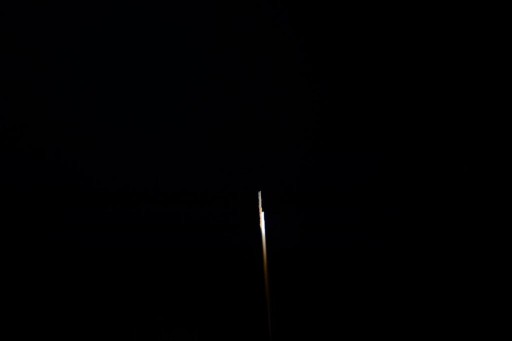
The setup for the deorbit burn will start around one hour ahead of ignition when the crew activates the accelerometer of the spacecraft, connects the Entry Module emergency batteries to the power bus, and activates cameras inside the Entry Module. Leading up to the burn, the crew will verify burn parameters via the outputs of the Digital Flight Control System of the spacecraft. The crew will then watch over the re-orientation of the Soyuz spacecraft to the retrograde burn attitude followed by the opening of the SKD main engine cover.
Ignition of the SKD engine of the Soyuz is planned at precisely 12:19:18 UTC on a deorbit burn of 4 minutes and 40 seconds that will slow the Soyuz down by 128 meters per second to place it on a trajectory to intercept the atmosphere at a precisely calculated position. SKD consumes hypergolic propellants and delivers 300 Kilogram-force to slow the vehicle down while flying high over the Atlantic. The deorbit burn has to be performed with great accuracy to put the Soyuz on a path to intercept the dense atmosphere within a narrow corridor, en-route to the planned landing site south-central Kazakhstan.
>>Soyuz TMA-17M Landing Profile
Inside the Entry Module, the crew will carefully monitor the performance of the SKD system during the burn, reading out burn parameters to Mission Control. Afterwards, they will close their helmets in preparation for the depressurization of the Orbital Module that occurs shortly after the Soyuz is committed to re-entry. The Orbital Module is depressurized to avoid an explosive release of air when the modules of the Soyuz are separated.
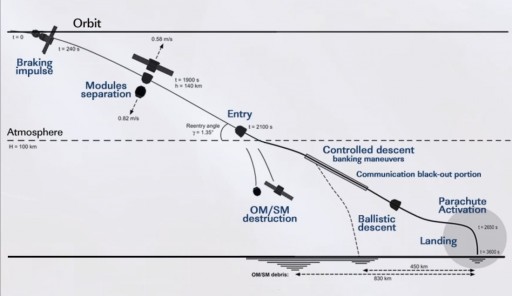
Module Separation is expected to occur at 12:46:33 UTC when the Soyuz is 140 Kilometers in altitude, approaching the dense layers of the atmosphere. The three modules of the Soyuz are separated by firing a set of pyrotechnic devices within the interfaces of the modules to allow the Service and Orbital Modules to be pushed away by loaded springs. The relative velocities of the modules are set up so that no risk for re-contact exists at any point during the re-entry process.
Immediately after separation, the Entry Module will begin using its Hydrogen Peroxide thrusters to maneuver to the appropriate orientation for re-entry – its heat shield facing the direction of travel with Soyuz flying at a re-entry angle of 1.35 degrees, set up by the deorbit burn.
The Entry Module of the Soyuz is 2.24 by 2.17 meters in size weighing nearly three metric tons, equipped with Hydrogen Peroxide thrusters used for attitude control during re-entry. It is not the most spacious vehicle, but offers enough space for the three crew members and some cargo that is returned for post-flight operations.
Soyuz will dip inside the dense atmosphere at 12:49:27 UTC when it will pass below 100 Kilometers and begin feeling the effects of the upper reaches of the atmosphere at a speed of 7.6 Kilometers per second. For the first 94 seconds of re-entry, the Soyuz will stick to its initial re-entry attitude before enabling Entry Guidance that will put the Soyuz through a series of bank maneuvers and modify its lift to home in on its planned landing site located 121 Kilometers north east of the town of Dzhezkazgan.
Blazing through the atmosphere, Soyuz will slow down rapidly, pulling up to five Gs which can be quite strenuous for the crew after returning from extended exposure to microgravity. The Peak G Load occurs at an altitude of 33 Kilometers when Soyuz will still be traveling over two Kilometers per second. Parachute deployment is expected when Soyuz passes 10.5 Kilometers in altitude starting with the release of a pair of Pilot Chutes that will pull out the larger Drogue Chute from its parachute bag. Under the Drogue, the Soyuz will slow down to a speed of 80 meters per second to create safe conditions for the deployment of the main chute that will slow the Soyuz down to a speed of 6.5 meters per second, also transitioning to a vertical descent.
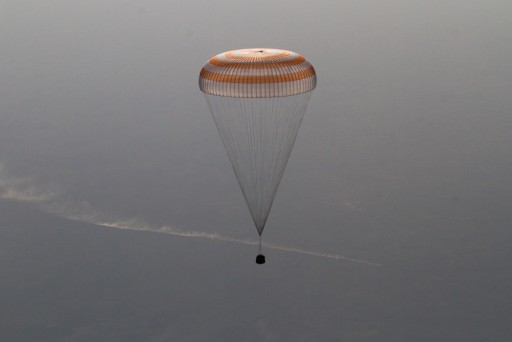
Descending vertically, the Soyuz will go through a set of preparatory steps for touchdown – jettisoning the heat shield to begin taking data with the landing altimeter, separating the window covers, venting down the Hydrogen Peroxide tanks and equalizing the cabin pressure. Inside the spacecraft, the Kazbek seats will move up to be able to absorb some of the shock occurring at landing, also signaling the crew to get ready for the big finale of their return to Earth.
Split seconds before touchdown, the Soyuz will fire its solid-fueled soft landing engines to cushion the impact. Touchdown is expected at 13:12 UTC on Friday in the southern landing zone of the Soyuz where a 300-person recovery team will be standing by in helicopters, all-terrain vehicles and off-road vehicles to begin rushing to the landed Soyuz craft. Because Soyuz will land in the dark at 19:39 local time, no video of the descending spacecraft can be expected and teams will rely on radio locator beacons to quickly find the spacecraft and rush towards the landed capsule.
The three crew members will be helped out of the Soyuz to enjoy a breath of fresh air after their post-sunset landing, bringing plenty of memories from a long flight to Space. At the landing site, sub-zero °C temperatures are forecast for the expected time of landing as well as light snowfall and breezy winds up to 40km/h.

